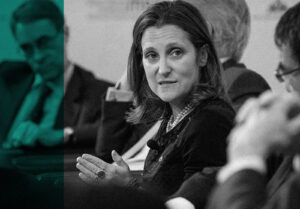
This article originally appeared in French in our sister publication, Conseiller.
By now, most clients may know about the tax-free first home savings account (FHSA), the new registered plan that allows first-time homebuyers to save, on a tax-free basis and within certain limits, for the purchase of their first home.
Should clients open an FHSA right away? That depends on several criteria.
When will the first home be purchased?
Since the FHSA eligibility criteria apply both when the account is opened and when a qualifying withdrawal is made, clients may be tempted to encourage their children to open an FHSA as early as 18, so they can quickly benefit from qualification and tax-deferred returns. This strategy seems very appealing for a young person who can save $8,000 a year (the annual deposit limit) or for a parent who wants to give their child money to contribute.
In the following example, when the accountholder meets all the conditions for the qualifying withdrawal to purchase their first home (no later than Dec. 31 of the 15th anniversary of the account’s opening), they will be able to withdraw the funds from the registered plan with no tax consequences. In our example, the total amount is $74,221, assuming contributions made at the beginning of the year and a 4.5% rate of return.
Table 1: FHSA contributions and balance over 15 years

However, many Canadians are waiting longer to buy homes. According to one study in 2020, the average age for buying a first home in Canada is around 36. If an 18-year-old opens an FHSA, as in our example, they will have to purchase a home by the time they’re 33 or close the account.
In this case, if your client has property in their FHSA at or before the end of their maximum participation period, they will generally be able to transfer the holdings directly, on a tax-deferred basis, to their RRSP, which will allow them to eventually use the government’s homebuyers’ plan (HBP).
However, the maximum RRSP withdrawal for the purchase of a qualifying property under the HBP is $35,000 (with repayment conditions).
While approximately $39,000 ($74,000 from the FHSA minus $35,000 for the HBP) will remain in the RRSP and continue to grow on a tax-deferred basis, the goal of withdrawing $74,000 tax-free for a down payment on the home will be missed.
If the client does not transfer the FHSA amount to their RRSP, the amount withdrawn from the FHSA will be taxable and must be included as income for the year the withdrawal is received. Note that this amount will be subject to withholding tax just like RRSP withdrawals. In our example, assuming a 40% tax rate, after withdrawing $74,221 from the FHSA the client would have about $44,500 net to invest in the purchase of their home.
A hybrid strategy would be to transfer $35,000 from the FHSA to the RRSP and withdraw this amount under the HBP in addition to withdrawing the taxable $39,000 from the FHSA ($23,500 net). This would allow for a total down payment of $58,533, instead of $44,533. Of course, the amount withdrawn under the HBP will have to be repaid to the RRSP.
To summarize, here are the three down payment amounts in our scenario:
- Proper FHSA planning (tax-free withdrawal): $74,221
- Opening the FHSA too early (taxable withdrawal): $44,533
- Opening the FHSA too early and using the hybrid solution: $58,533
As we have seen, there can be significant monetary consequences to when an FHSA is opened. Advice to clients should therefore consider their needs, objectives and savings capacity as well as the FHSA’s restrictive eligibility criteria.
Charles-Antoine Gohier, financial planner, MBA, is the Practice Lead, Financial Planning, Wealth Management Solutions Group at National Bank Financial



